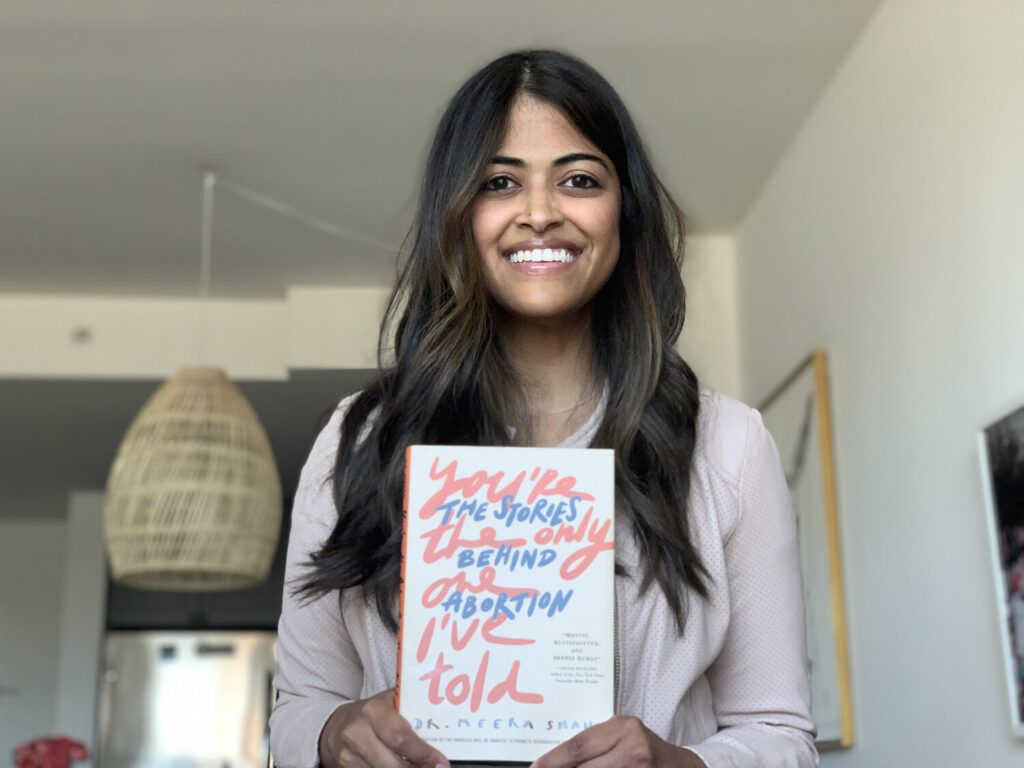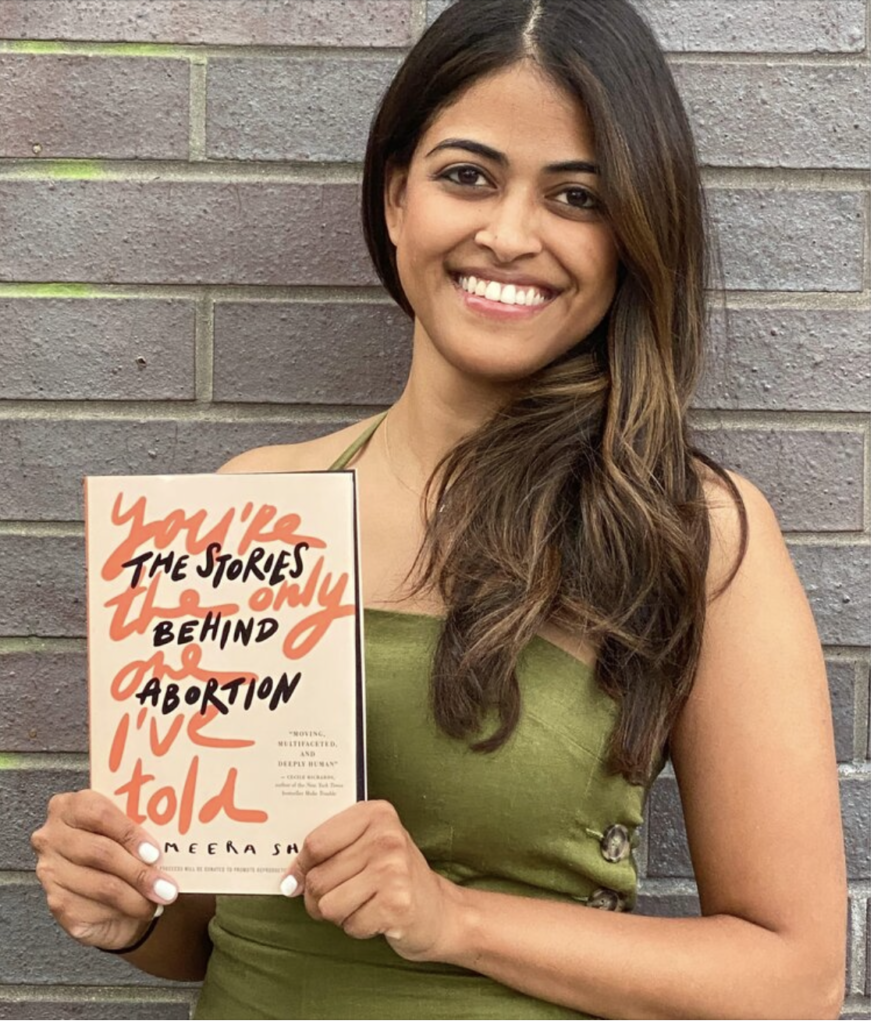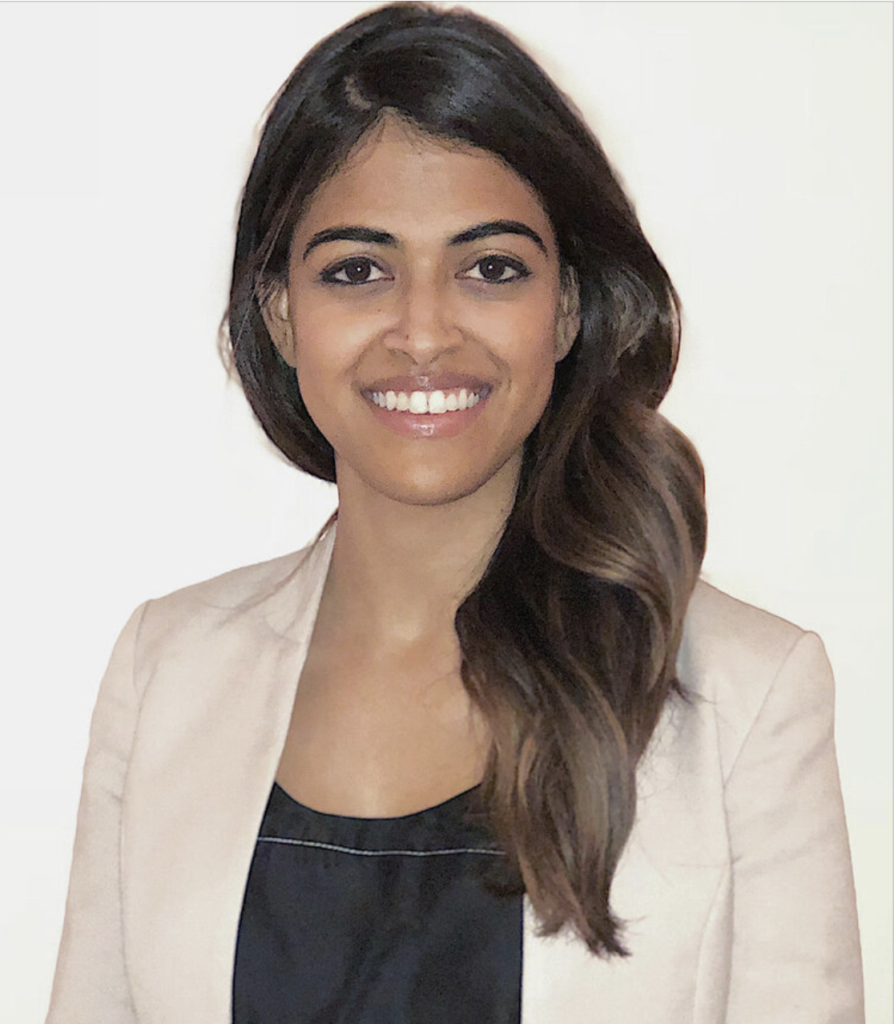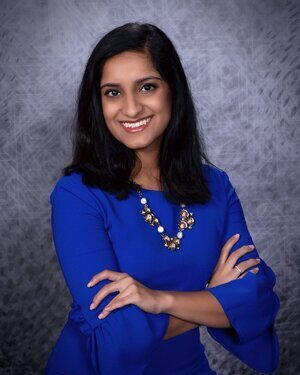
This article has been written by Riya Dange.
Reproductive justice has surfaced as one of our nation’s most contentious issues in the recent past – so it is imperative we educate ourselves on the people affected by governmental policies. Dr. Meera Shah, a family medicine physician and abortion care provider, authored a book on reproductive justice from a patient-centric, intersectional standpoint. You’re the Only One I’ve Told: The Stories Behind Abortion was released on September 1st, 2020 and chronicles the experiences of 17 diverse individuals. In each chapter, Dr. Shah endeavors to paint a holistic picture of the storyteller’s life and the converging factors that led them to seek an abortion. We sat down with her to discuss her book, her advocacy work, and her empathetic approach to all sides of reproductive justice.
Reproductive justice as an issue goes far beyond the abortion debate, spanning the entire spectrum of sexual and bodily autonomy for every human being. In publishing our conversation with Dr. Shah, we hope to foster productive, respectful dialogue on a topic that affects many members of our community. We understand that reproductive health issues are, by nature, highly personal and emotionally charged. However, by delving into these discussions, we can take steps toward dispelling the stigma around abortion and reproductive health access – thereby liberating our community members from the compulsion of silence.
Meera’s Journey into Medical Advocacy
CAN YOU TELL US A LITTLE BIT ABOUT WHAT YOU DO?
I am the Chief Medical Officer of Planned Parenthood Hudson Peconic. I am a board-certified family medicine by training, and I have specialized in sexual and reproductive healthcare as well as transgenic care for transgender and gender non-binary people. At Planned Parenthood, I’m an abortion provider. I also provide prenatal care and SRH [sexual and reproductive health] needs for anyone on the gender spectrum. Outside of my direct clinical work, I do a lot of advocacy. As you know, an individual’s right to decide what is best for their body has been challenged in many different ways, and as a healthcare provider and physician who does this work firsthand, I feel like it is my responsibility to advocate for my patients. For example, in the Louisiana SCOTUS [Supreme Court of the United States] case, I contributed to an amicus brief in support of abortion access.
YOU WROTE IN YOUR BOOK THAT, IN THE PAST, YOU USED TO HESITATE TO DIRECTLY TELL PEOPLE THAT YOU PERFORM ABORTIONS. HOW AND WHY DID YOU DECIDE TO BE MORE OPEN ABOUT THAT AND ADVOCATE FOR YOUR PATIENTS IN TERMS OF THESE ISSUES?
I grew up in a really conservative household. My parents are of Indian descent. I was born in the United States, but we didn’t really talk about sex. During my clinical training, I had an incredible mentor who guided me through this aspect of healthcare and made me realize how incredibly important and normal this is. When I started to provide abortions, I just realized it was so empowering. The amount of gratitude that my patients would express after I had performed an abortion… it was like, “Wow, this work really needs to be protected, and we need to make sure we improve access to it.”
I still wasn’t sure about how my friends, my world, and the communities that I work in would respond to the work I did. You hear all these stories about people being threatened for providing abortion care, so I was also worried about my safety. George Tiller was assassinated outside of his church because of the work that he did. I take all the precautions to be smart about the work that I do. I can’t sleep at night without feeling that I’ve done everything in my power to really help people.
It was a slow progression because it was scary – personally, professionally, safety wise. Now that I’ve been open with the work that I do, all I am met with is: “Oh my gosh, I’ve had an abortion, and this was my experience. I haven’t told many people.” Or: “Thank you for doing this work.” A lot of that is because I work in New York, which is a progressive state. My friends who work in conservative states still have to be very hush-hush about what they do.

NOW YOU TALKED ABOUT HOW EMPOWERING IT WAS TO BE ABLE TO WITNESS PATIENTS GETTING ABORTIONS AND BEING ABLE TO TAKE CONTROL OF THEIR LIVES. COULD YOU SPEAK A LITTLE MORE TO THAT?
It’s really empowering for the patient. For many of my patients, the pregnancy is literally dangerous for them given the other medical conditions they may have. For some patients, if they’re in a relationship and they’re experiencing intimate partner violence, they don’t feel like it’s safe to bring another child into the world or into that relationship. When COVID hit, I had patients who wanted to continue their pregnancy and felt like they couldn’t do it because they lost their job, they lost their insurance, they just couldn’t afford to have another child. So they had to end the pregnancy. To see somebody be able to take control of their body and their future is work that I just know I want to continue doing throughout my career.
YOUR ADVOCACY FOCUSES A GREAT DEAL ON REPRODUCTIVE JUSTICE, FROM WHAT I’VE READ. CAN YOU TELL US A BIT ABOUT WHAT REPRODUCTIVE JUSTICE IS AND HOW THAT CONCEPT CAME ABOUT?
Reproductive justice is a movement that was started in the mid-90s by 12 Black women. And it takes the idea of reproductive health access further. It’s the idea that an individual should have the right to continue a pregnancy, not continue a pregnancy, or to parent in the way that feels right to them. And reproductive justice really is an intersectional approach. What does it take for a trans Black woman to become a parent? What does it take for a cis Black woman to become a parent in the United States today? What does it take for people to raise a child without fear of the child being subjected to violence, specifically gun violence or police brutality? What does it take for somebody to be able to take time off work to go to the health center and to have transportation to get there to have an IUD inserted? It’s not just about inserting the IUD. It’s about – does that person’s insurance cover the cost of the IUD? What other social justice issues make it so that the person can get the healthcare that they need? And the communities that are impacted the most are people of color – specifically, Black and indigenous people – and the LGBT community.
Promoting Inclusivity in Medicine
ARE BIPOC INDIVIDUALS TYPICALLY EXCLUDED FROM CONVERSATIONS ABOUT REPRODUCTIVE JUSTICE?
Either they’re excluded, or they’re not kept at the core of these discussions. And they’re the ones that are impacted the most. Roe v. Wade made it so that abortion was legal in all fifty states in 1973. However, a few years later, the Hyde Amendment went into effect and made it so that Medicaid couldn’t be used to pay for abortion. Now, who are the majority of recipients who need abortion? They’re people of color. Who are the ones who are most likely to have Medicaid? People of color. So basically what the Hyde Amendment did was strip access from Black people. Here we are celebrating Roe v. Wade, which was an incredible step in the right direction, but we need to make sure we also look at access via public insurance because lower-income Black communities are suffering the most.
WHAT ABOUT LGBTQ INDIVIDUALS? HOW DO THEY FIT INTO ALL OF THIS?
I work very closely with the LGBTQ community, specifically the trans community, and there’s a lot of trauma that can be experienced in the doctor’s office. There’s a lot of misinformation and poor education on the healthcare providers’ part around the needs of the community. My trans patients often tell me that they’re the ones having to educate the provider on how to take care of them, and that’s never how it should be.
And then there are misconceptions that the patients may hold. For example, a trans-masculine patient who’s having testosterone will stop having their periods. I see that oftentimes they’re not aware that they’re still ovulating, and if they have sex in a way that they can get pregnant, they could find themselves with an unintended pregnancy. They’ll come see me for abortion care, and I have to provide them with the education that, yes, you’re using testosterone for masculinization and, yes, it’s stopping your period, but that doesn’t mean you’re not ovulating. After that, we talk about contraception. Or if it’s a trans-masculine patient who passes as male at the doctor’s office, they’re not asked about how they’re having sex or what body parts are being used for sex. They may miss an opportunity to have a pregnancy test done or to have contraceptive counseling.
There are a lot of barriers to care and a lot of trans patients are out of work due to stigma and discrimination in the workplace. A lot of them have food scarcity or don’t have insurance and have trouble accessing even basic care, like a flu shot or a pap test for cervical cancer screening.

SO HOW CAN WE START MOVING TOWARD GREATER INCLUSIVITY FOR LGBTQ PEOPLE AND THE BIPOC COMMUNITY?
One of the biggest things is training more BIPOC and LGBT providers to do this work because there is bias in healthcare. I’m not talking about overt biases; that exists, but I’m talking more about the implicit bias that can go on in a patient encounter. There is data around this: those implicit biases are less likely to occur if a patient is being seen by someone who looks like them and who has a similar lived experience as them.
We also need to look at sexual and reproductive healthcare through a racial justice lens and have more training on the needs of the trans community. Many providers think that they don’t see patients who are trans, but they do. They just may not be taking a thorough medical history or approaching their patients in a way where they would come to know they’re seeing a trans patient. Our default tends to be cis. We just assume that if someone is female-presenting that they were assigned female at birth, but we have to change our approach.
Battling Social Stigma
IN TERMS OF BATTLING THE SOCIAL STIGMA AROUND ABORTION AND REPRODUCTIVE HEALTH, YOU TALK ABOUT USING STORIES TO OPEN UP DIALOGUE. HOW HAVE YOU TRIED TO DO THAT THROUGH YOUR BOOK?
I talked about the Hyde Amendment. How exactly does the Hyde Amendment impact someone’s life? Well, let me illustrate that through storytelling. In one of the chapters [in my book], [a woman named] Desiree needed an abortion, and she lived in Indiana, where you can’t use your public insurance and you definitely can’t use your Medicaid. She already had two or three children, and she was juggling a few jobs. She literally had to count out dollar bills to pay for her abortion. Why is that okay? Why should we say, “We don’t trust you to make decisions because of this one politician’s belief system and his constituents that support him?” That is not fair, and it’s totally morally wrong.
Even if somebody doesn’t completely identify with an entire story, there are definitely parts of various stories that people can connect with – like what it means to be a mom, what it means to be in an abusive relationship, what it means to want to finish school. Those are all things that some of us have experienced and can connect with. Even if I can’t change a mind, I hope that I can at least open people’s minds up with these stories.
WHAT WAS THE PROCESS OF COLLECTING ALL OF THESE STORIES LIKE? HOW DID YOU FIND INTERVIEWEES AND GET THEM TO TRUST YOU ENOUGH TO OPEN UP ABOUT SOME OF THEIR MOST INTIMATE, EMOTIONAL EXPERIENCES?
I do have privilege as a physician. The nature of my work is that people open up to me, so that was definitely part of it. There were many stories that people shared with me because they opened up to me, not knowing that I was even writing a book. Later on, I went to them and said, “You shared a very personal story with me because that made you feel safe and comfortable, and you also expressed relief after being able to open up to somebody and share a story that you’ve never shared before. How would you feel if you shared your story with the world?” People were very open to it and said, “Well, if my story can help other people, then I want to share it.”
I had more stories than I had pages for. All the stories were unique, and it wasn’t that one story was better than another, so I had to pick. I had to stop because I had to turn in my manuscript, but I could have kept going. Sometimes a story would start off in one way but end up going in a completely different direction by the end of the interview. Because our lives are so complex and intersectional, I wanted to make sure I highlighted as much of that as possible.
HOW DID YOUR FAMILY BACKGROUND ALLOW YOU TO APPROACH ALL SIDES OF THE REPRODUCTIVE JUSTICE ISSUE WITH UNDERSTANDING AND EMPATHY?
My father grew up Jain and introduced this philosophy to us at a young age. One of the main tenets of the religion is non-absolutism [or anekantavada]. It’s something that’s just so beautiful, and I think about it all the time. I’ve actually used it when I hear somebody say something that sounds wrong to me. I always pause and think, “You know what, let me see where they’re coming from. Let me look deeper into why they are saying what they are saying.”
It really plays out in my day-to-day profession as a physician and as an abortion provider. Look, I get it. I get that you believe that there’s this thing inside you that’s growing to become a potential human. I get that. And that may trigger a set of emotions when we start talking about ending the pregnancy. But let’s start looking past the abortion itself, and let’s look at the whole person. Let’s look at the context in which this is occurring. And let’s trust the person who is carrying the pregnancy.

WHAT KINDS OF MISCONCEPTIONS HAVE YOU SEEN TOWARD THE PEOPLE WHO HAVE ABORTIONS?
People sometimes ask me, “Why do people have abortions?” and “What does the typical abortion patient look like?” And I’m like, “Well, there is no typical.” My patients represent every single socioeconomic background, religious background, racial/ethnic makeup… Abortion is so normal and common that there is no one way to describe an individual who has an abortion. Most of the time, I don’t know exactly why they’re having an abortion unless they share that with me. I don’t know their whole life experience, so who am I to judge and say, “You can have one” or “You can’t have one,” which happens in so many states?
I KNOW THIS IS A COMPLEX ISSUE, BUT CAN YOU GIVE US A SENSE OF HOW PATIENTS’ VARIED CULTURAL BACKGROUNDS AND EXPERIENCES CAN INFORM THEIR DECISIONS ON WHETHER OR NOT TO HAVE AN ABORTION?
Definitely. I talk a lot about that in my book. Sometimes it’s religion, sometimes it’s cultural. I’ll never forget one patient I saw: a young woman who was engaged, going to get married in a few months. She identified as Muslim. I remember she said, “I really want to be a mom, but I’m getting married in a few months.” One of my staff members later asked me, “If she really wants to be a mom, why can’t she be a mom?” I told them something the patient actually shared on her own: “If either one of our families found out that we had sex before marriage or that I was pregnant before marriage, we would both be kicked out of our families.” She also consulted with her imam – or her priest – who said, “You’re less than 42 days pregnant, so it is okay” because the belief, in her version of Islam, is that the soul enters the developing pregnancy after 42 days. In my book, there’s also a story about a rabbi who has an abortion, and she talks about how in the Jewish faith, it’s believed that life begins at the first breath.
Outside of religion, there are a lot of cultural beliefs around abortion. What I’ve found in a lot of South Asian cultures is: sex before marriage is a no-no, but abortion is okay, if that’s what you think is right for you. Culture, religion, education, financial status – all of these things play into some of these decisions, whether patients are aware of it or not. Whether they are able to verbalize it in the moment or not, it’s relevant.
Takeaways
HOW CAN WE CULTIVATE AN EMPATHETIC, INTERSECTIONAL PERSPECTIVE ON REPRODUCTIVE JUSTICE AND WORK TO BRING GREATER CULTURAL UNDERSTANDING INTO THE POLITICAL BATTLES BEING WAGED TODAY?
Well, two things. One: I think, as a scientist, I support facts. A lot of the politicians are spewing myth after myth after myth in their debates. And again, as a physician, my job is to provide my patients with factual information.
Number two is storytelling and developing a sense of empathy. Abortion shouldn’t be siloed as this one procedure; it needs to be connected to the human being who’s having the procedure. My goal is to try and reach some of the people who don’t really have a developed opinion on reproductive health issues or even connect with the very opinionated folks on an issue that most people can get behind, which is contraception access. We need to be reaching people where they are and catering our outreach to folks depending on where they’re already coming from.
DO YOU HAVE ANY ADVICE FOR ASPIRING DOCTORS, NURSES, OR HEALTHCARE ADVOCATES BASED ON YOUR EXPERIENCES LEADING UP TO AND WHILE WRITING YOUR BOOK?
Everyone working in healthcare needs to be aware of this. Continuing a pregnancy, or not continuing a pregnancy, is important for healthcare professionals in all fields to know about while caring for their patients. For instance, a patient may go see a cardiologist and realize they have a heart condition that could worsen because of the pregnancy. So the cardiologist may have to have a discussion with the patient about what that looks like in a very compassionate, patient-centered way. We also need to get all types of healthcare professionals from all fields onboard as advocates. That way, we can really solidify this understanding of abortion as an issue that impacts all people.
***************
You’re the Only One I’ve Told is available for sale online through Amazon, Barnes and Noble, and the Chicago Review Press.
Author Bio:
Riya Dange is a scientist, writer, Harry Potter fanatic, and work in progress. She graduated from Duke University May 2019 as a Neuroscience major and Linguistics minor. She currently works as a neuroscience research fellow in Washington, D.C. studying treatment strategies for schizophrenia. She designed a research project and delivered a TEDx Talk on using empathy to empower sexual violence survivors. In her free time, she loves traveling, writing, and learning as many new languages as she can.




